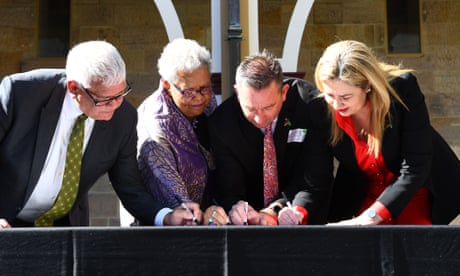The Guardian Explainer, 19 April 2023
Here’s what we know so far about how the Albanese government hopes to enshrine an Indigenous voice in the constitution via a referendum
The Albanese government has proposed to enshrine in the constitution an Indigenous voice to parliament, which would be voted on in a referendum.
Here’s what we know so far.
What has happened already?
The government has put forward a simple referendum question for us all to vote on and unveiled the final wording of the constitutional amendment.
The question:
The question:
A Proposed Law: to alter the Constitution to recognise the First Peoples of Australia by establishing an Aboriginal and Torres Strait Islander Voice.
Do you approve this proposed alteration?
The proposed alteration to the constitution:
Chapter IX Recognition of Aboriginal and Torres Strait Islander Peoples 129 Aboriginal and Torres Strait Islander Voice
In recognition of Aboriginal and Torres Strait Islander peoples as the First Peoples of Australia:
1: There shall be a body, to be called the Aboriginal and Torres Strait Islander Voice;
2: The Aboriginal and Torres Strait Islander Voice may make representations to the Parliament and the Executive Government of the Commonwealth on matters relating to Aboriginal and Torres Strait Islander peoples;
3: The Parliament shall, subject to this Constitution, have power to make laws with respect to matters relating to the Aboriginal and Torres Strait Islander Voice, including its composition, functions, powers and procedures.
The vote is likely to occur between October and December 2023.
The government has promised a public education campaign before the referendum, to answer common questions about how the process will unfold, but it will not fund either the yes or no campaigns.
The referendum requires a majority of votes in a majority of states to succeed. If the vote is successful, parliament will then design the Voice via legislation.

The government has also reformed the Referendum Machinery Act, bringing the process into line with the electoral laws governing federal elections. The reforms will include donation disclosure rules, and public funding for campaigns to mitigate misinformation around the referendum process.
Official pamphlets will be provided to voters outlining both the yes and no campaign positions. In most referendums, these pamphlets have been written by MPs.
The Australian electoral commission has set up a website to help voters understand the constitution and the referendum. The AEC will track campaign funding and is running a disinformation register.